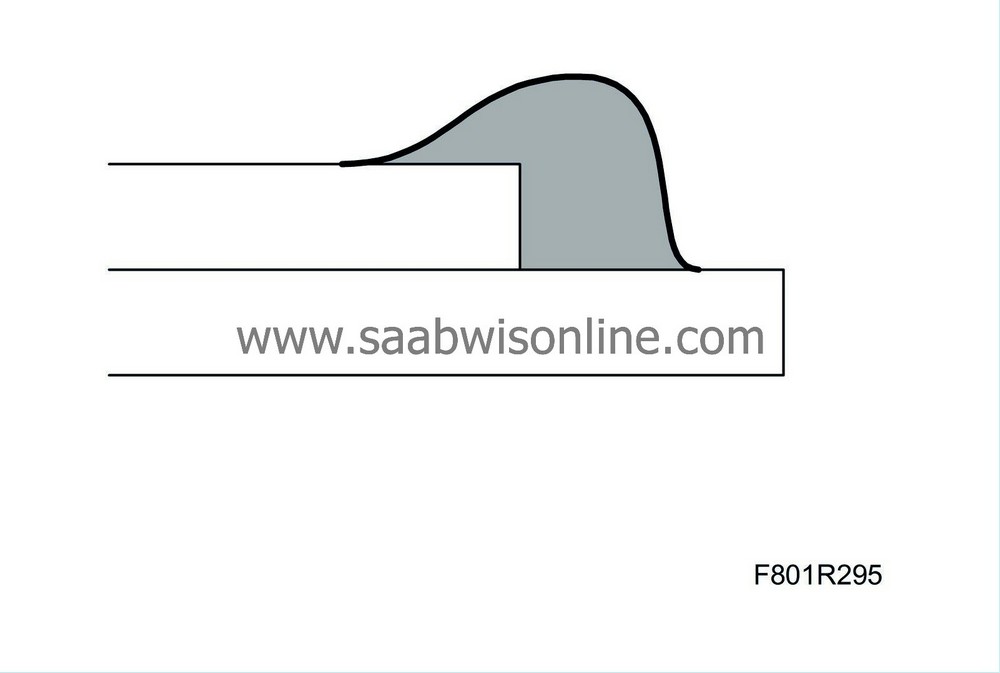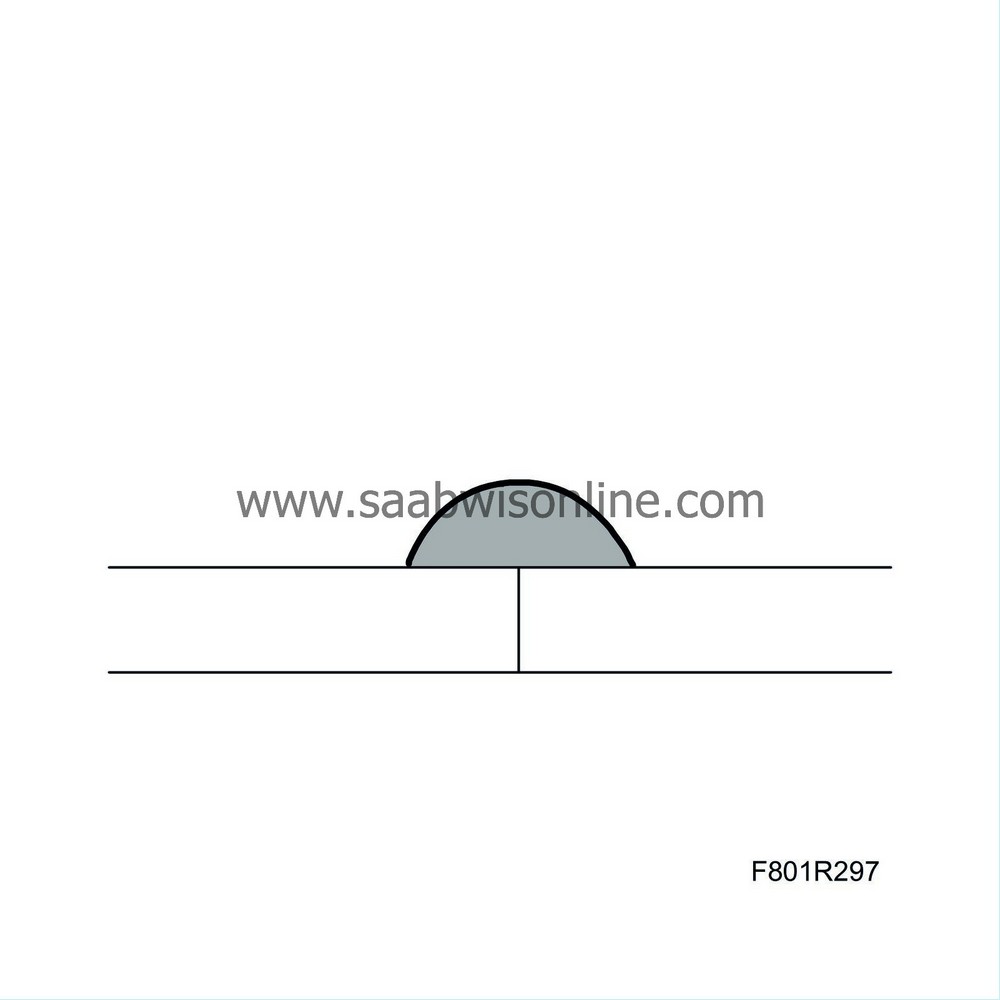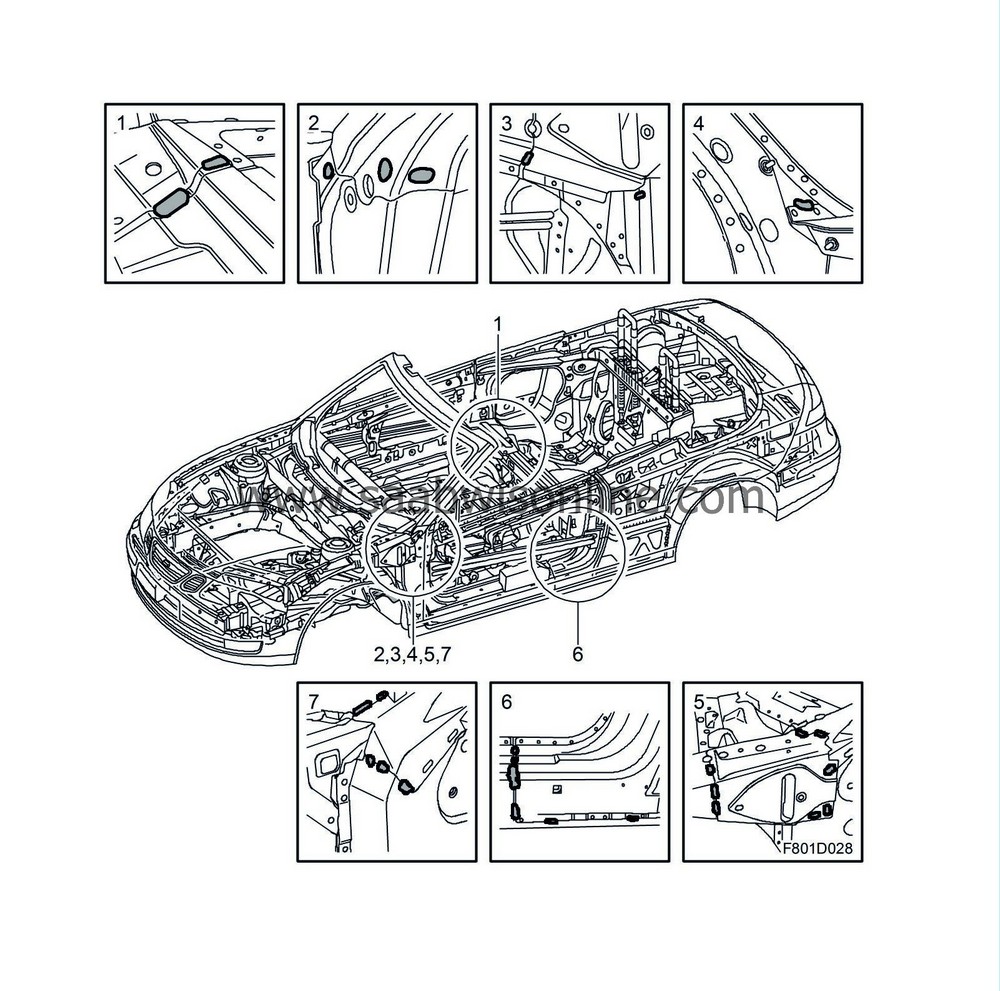MIG brazing, CV (not EU)
| MIG brazing, CV (not EU) |
|
|||||||
Sheet metal damage where there is MIG brazing involves a new procedure for repairs. Before the Saab workshops have procured new MIG brazing equipment, damaged cars having MIG brazing can be repaired with existing welding equipment, but instead using bronze rod and argon gas. In all cases 100% pure argon gas must be used and the welding wire must be 1 mm.
The appearance of a MIG brazing joint differs compared with a conventional weld joint. In order to obtain good results for welding when using a standard machine the rod supply must be adapted and the power reduced. However, when welding with low energy the arc is occasionally broken, resulting in stronger sizzling and more spray. A good MIG brazing joint must be evenly rounded.


MIG brazing emits a significant amount of zinc gas in the molten material and brass is formed, with few or no air holes as a result. As MIG brazing is a soldering process where the panels do not need to be melted together, there is also less risk of burning holes. In the cases where grinding is required the welds are considerably easier to grind. Ensure that the independent workshops which are engaged have access to this information.
| Procedure |
The following materials are required for converting existing welding equipment: procure
| • |
16-93 180 983 Bronze rod 1mm
|
|
| • |
Pure argon gas
|
|
| • |
Hose package, if required
|
|
| 1. |
Clean the feeding mechanism and the feed rollers.
|
|
| 2. |
Ensure that the hose package and welding torch tip are in good condition. Replace if necessary.
|
|
| 3. |
The pressure on the feed rollers should be low to prevent the rod from being broken.
|
|
| 4. |
The hose package should be held as straight as possible so that it is easy to feed the rod. The welding torch tip must be held at a right angle in relation to the weld joint.
|
|
| 6. |
Test the strength of the joint by pulling the panels apart using adjustable pliers or pipe wrench with the panels secured in a vice. The result of a good joint is that the surrounding panel gives way and not the brazing itself. Adjust the setting of the weld if necessary.
|
|


 Warning
Warning

